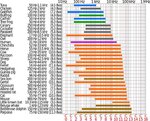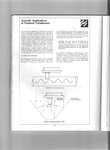nadiro
Member level 1

Hello Dear Friends
I want to record and playback sounds in range of 0- 150 KHz frequency and I want to use any microcontrollers of ARM series.
I have some questions:
1. How much should sampling frequency of ADC be?
2. Can I use ICs like VS1053? Does this IC support 0-150KHz frequency?
3. Can I directly save recorded sound on SD Card with VS1053?
4. Which microcontroller is appropriate for this project? What is your idea?
Thanks for your attention.
I want to record and playback sounds in range of 0- 150 KHz frequency and I want to use any microcontrollers of ARM series.
I have some questions:
1. How much should sampling frequency of ADC be?
2. Can I use ICs like VS1053? Does this IC support 0-150KHz frequency?
3. Can I directly save recorded sound on SD Card with VS1053?
4. Which microcontroller is appropriate for this project? What is your idea?
Thanks for your attention.




